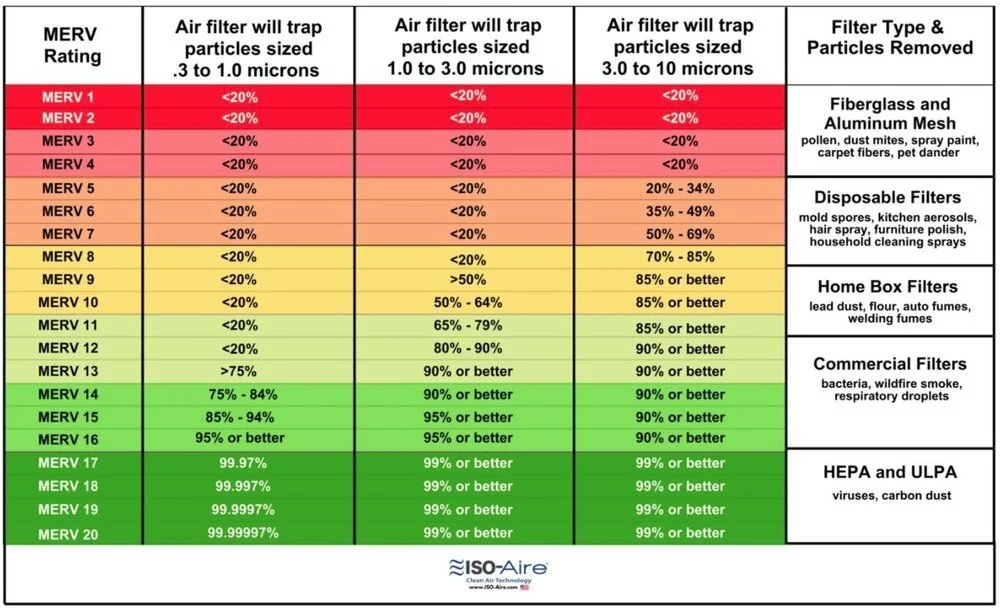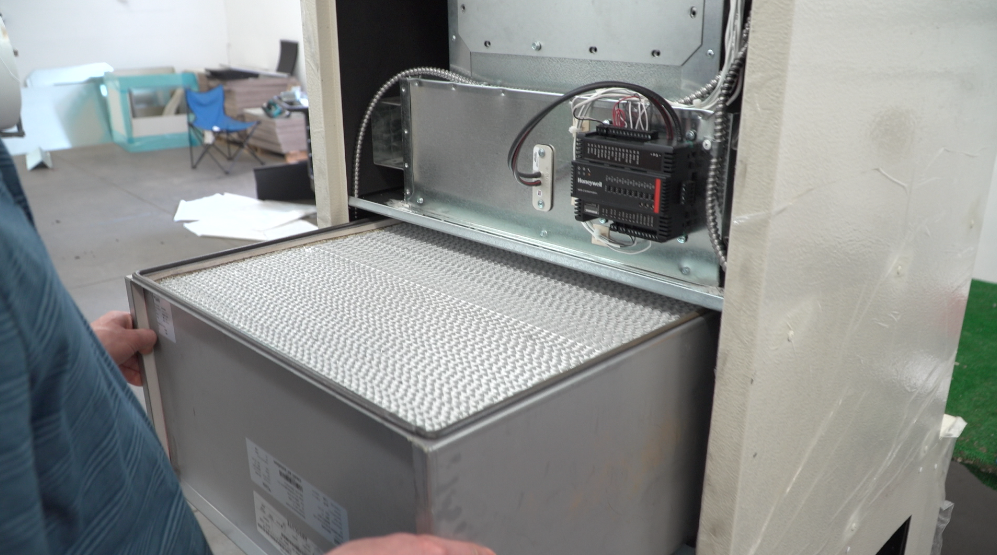HEPA Filters and Their Role in the Battle Against COVID-19
How HEPA Filters Trap Viruses
SARS-CoV-2, the virus that causes COVID-19, spreads primarily via airborne transmission. To reduce the number of COVID-19 infection cases there are numerous options available. High-Efficiency Particulate Air, or HEPA, filters have been touted as the gold standard by top health organizations like the CDC, ASHRAE, and the EPA as one of the most significant go-to prevention measures that you can implement to stop the transmission of COVID-19. All air filters are given a MERV rating, with a HEPA filter rated at a MERV-17 and above. HEPA filters at their very worst, filter 99.97% of particles that are 0.3 microns in diameter. However, this is quite significant, as particles that are 0.3 microns are actually the hardest size to trap, with smaller particles actually being able to be caught at a much higher percentage. Thus, when a person infected with COVID-19 or another type of viral disease coughs, sneezes, or breathes, the viral particles are able to be caught by a HEPA filter.
Although there are various ways that you can implement a HEPA filter into your commercial facility or home, not all are equal in terms of cost and feasibility.
Retrofitting an Existing HVAC System to Include a HEPA Filter
Can I use a HEPA filter for my furnace?
A HEPA filter has such dense filtration material that you cannot just put one in your furnace at your house or facility. Because of its highly dense material, a HEPA filter will cause the air static pressure to become too great for the furnace or air conditioning fan to be able to handle which can cause damage or severely reduce airflow of a system. Existing HVAC systems are also not designed to accommodate the large size of the filters themselves. Ultimately, retrofitting an HVAC system to accept a HEPA filter and its high static pressure is too expensive and not practical.
Use Portable Air Purifiers Equipped with a HEPA filter to Combat COVID-19
To avoid the high costs of retrofitting an existing HVAC system, many public health organizations recommend using portable air purifiers equipped with a HEPA filter and that are able to deliver the appropriate number of air changes for your space. Learn more here about how to determine the number of air changes needed to protect against COVID-19 for your space. Schools, businesses, and other commercial facilities across the nation have been adding portable air cleaners because of their effectiveness and cost-friendliness.
What to Consider When Choosing an Air Purification System
ISO-Aire HEPA air purifier throwing clean air high, while also pulling contaminated air down away from the breathing zone. Selecting an effective air purifier design is critical to ensuring good indoor air quality.
Portable air purifiers are a great option for improving indoor air quality, but there are several considerations you should be aware of before purchasing yours, including design and air-throw, maintenance costs, lifespan, energy usage, noise level, and more. Learn more about what to look for and what to avoid in an air purifier.
Meet the Portable, Low-Maintenance, and Effective ISO-Aire HEPA Air Purifiers
There are many air purification models on the market. But none stand up to the quality and longevity that ISO-Aire offers. Built off of over 55 years of air filtration and ventilation experience, ISO-Aire uses a HEPA filter that is 99.99% effective, providing medical-grade commercial air purification. We also offer two additional levels of air purification technology- ozone-free bipolar ionization and germicidal UVC.
In addition to how effective our air purifiers are, the 12-inch HEPA filter used in all of our models needs to be replaced only every 5-6 years, compared to only a few months or a year like competitor models. Furthermore, our air purifier models all have a lifespan of over 20 years, providing a long life solution. Other highlights include low energy usage and costs, low maintenance, and the quietest noise levels on the market.
Our diverse line of air purifiers have been providing clean air at school districts, businesses, fitness facilities, daycares, senior living facilities, hospitals, and residences nationwide. Our team of experts are available and ready to help you determine which solution would be best for your space based on your facility and needs.










